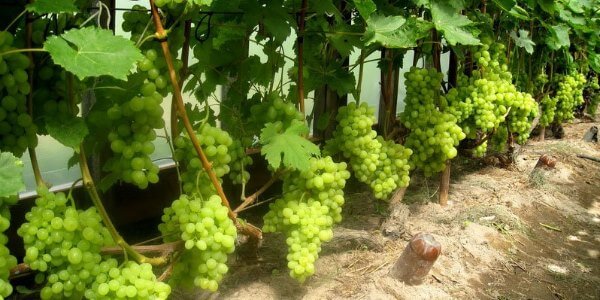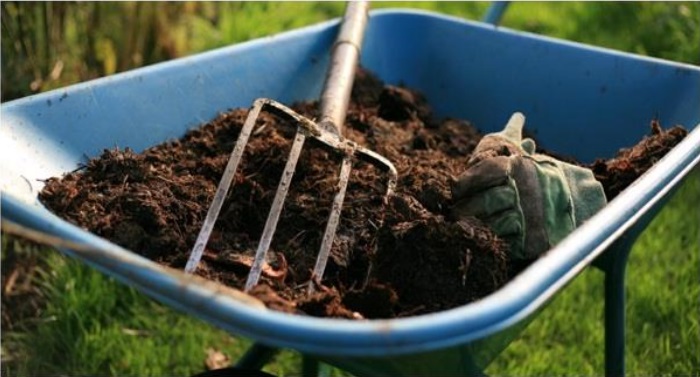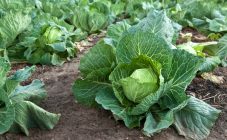Content:
The yield of grapes is influenced by a number of agrotechnical subtleties, including the proximity of grapes with other crops. Incorrectly selected "neighbors" will oppress the grapes, which will negatively affect the quantity and quality of the harvest. Therefore, it is important to figure out what can be planted next to the grapes.
Conditions for the cultivation of grapes
Temperature
At every stage of cultivation, the crop needs the appropriate temperature. So, the awakening of the kidneys in early spring occurs when the average daily temperature reaches + 10 ° C. When entering the flowering phase, the fertilization process proceeds best at a temperature of + 25-30 ° C. If this indicator drops to + 15 ° С, pollination will not occur. In order for the crop to fully mature and accumulate a sufficient amount of sugar, the plant needs a temperature around + 30 ° C. If it is equal to +15 ° C or even lower, it will not be possible to get a high-quality crop. The fruits will be unsweetened, strong sourness will be present in them.
The above-root and underground parts of the bush have different reactions to too low and too high temperatures during dormancy or during the growing season. So, during the growing season, the plant grows much worse at temperatures above + 37 ° С and below + 10 ° С. When the temperature drops to zero and below, as a rule, the death of the bush occurs.
At the same time, low temperatures in winter usually do not harm the plantings. However, it all depends on the variety, the reliability of the shelter and the winter conditions. The most dangerous conditions in winter are frost with strong winds in the absence of the necessary shelter and stable snow cover. In such conditions, the buds of European grape varieties die at a temperature of -15-17 ° C.
Shine
The grapes need good lighting. With a deficiency of sunlight, the following symptoms appear on the plants:
- lightening of foliage, slowing its growth and premature defoliation;
- loss of marketable and flavoring properties of the crop;
- lengthening of internodes on stems;
- decrease in productivity.
In view of this, the plant makes special demands on the place of cultivation. So, you cannot plant it in the narrowed spans between buildings, as well as along the walls directed to the north. South-facing slopes and south-facing walls are preferred for the vineyard.
A too sharp change in the light regime can also pose a danger. As a result, it is necessary to open the bushes in a timely manner in the spring.
The soil
Grapes can be cultivated on different types of soils, however, the culture shows the highest productivity on those soils that warm up better, pass moisture and oxygen more intensively and are easier to process. These include soils with a high content of crushed stone, coarse sand, pebbles. It should be borne in mind that for all its advantages, such soils are usually characterized by a low content of nutrients, therefore it is recommended to make appropriate dressings in them.
On clay soils, the cultivation of grapes is also allowed, but such soil mixtures are usually characterized by poor structure, poor water and air permeability, and problems with processing. The situation can be corrected with the help of organic fertilizers, primarily manure. Solonetzic and waterlogged soils are not suitable for growing crops.
Humidity
For grapes, both excess moisture and its deficiency are equally harmful and dangerous. In the first case, there is a weak development of the root system, incomplete fertilization of inflorescences. The shoots continue to grow during the growing season and therefore freeze out in winter. The berries rot and become unusable. Fungal diseases spread in waterlogged soil in warm weather and thickened plantings.
Lack of moisture also causes the development of diseases and pests. In such conditions, the stems do not mature enough, and the bushes often freeze out in winter.
In order for the bush to fully grow and develop, the plant needs about 500-700 ml of precipitation per year. Rain is especially important for the plant during the following periods:
- before flowering;
- after the end of flowering, when all parts of the plant have increased growth;
- late autumn.
The soil is well moistened with autumn precipitation, which is why it is recommended to carry out snow retention in winter, and to retain melt water in the ground in spring. The vine can grow normally even with a lack of precipitation, but only if the groundwater is at a depth of less than 5 meters from the soil surface.
Compatibility of grapes with other crops
Grapes are one of the most light-loving fruit crops. It should not be grown between woody, tall crops, as these will inevitably shade the grapes.
When growing grapes with other neighbors, it is necessary to take into account the peculiarities of the plant root system. With an incorrectly selected neighborhood, the roots of different crops will clump, this will complicate the flow of moisture and nutrients. In this regard, legumes, for example, are good neighbors for grapes, while corn is not suitable for joint cultivation.
Grapes belong to the category of moisture-loving crops, which form a high-quality crop only with regular irrigation. For him, it is necessary to select the appropriate neighbors, including on this basis.
What can be planted near grapes
There are a number of crops in the immediate vicinity of which the grapes will feel comfortable. The main neighbors of grapes are presented in the table:
| Plant | a brief description of |
|---|---|
| Sour sorrel | It is considered the best option for the neighborhood with grapes. Next to it, the crop begins to grow faster and form larger and better yields. |
| Radish | This vegetable is also considered a suitable crop for joint cultivation in viticulture. |
| Strawberry | This berry is usually cultivated in the aisles of grapes. The shade from the trellises covers the plants from the sun's rays and makes the soil more moist, which is the best fit for full-fledged cultivation of grapes. The root systems of crops lie at different levels, so there is no competition between them. It is important not to plant strawberries very close to the grapes and keep the distance from the berries to the trellises at 50-100 cm. |
| Bulb onions | Both crops are comfortable to grow together. Onions are usually planted in grape aisles.With normal top dressing, moderate irrigation and timely loosening of the soil, both plants will form a high-quality crop. |
| Cucumbers | This crop can be grown near grapes in the open field in the event that the plants were obtained by seedling at home or in a greenhouse. |
| Beet | Among vegetable crops, it is considered one of the most compatible with grapes. |
| Roses | These plants are susceptible to one of the most dangerous diseases of grapes - mildew, and it is even more harmful to flowers than to berry crops. In general, you can plant low-growing flowers under grapes. |
| Currants and raspberries | It is allowed to plant these plants near grapes. However, currants require frequent regular watering, which can indirectly harm drought-tolerant grapes. |
| Mint | The compatibility of grapes and mint is high. The plant will not feel oppressed in the shade of the berry culture. |
Considering the compatibility of grapes with other plants, you need to take into account that there are a number of crops that cannot be planted near the vines. They remove from the soil a number of nutrients necessary for the berry culture, and instead release harmful toxins. These include:
- eggplant;
- corn;
- tomatoes;
- potatoes;
- zucchini;
- leek;
- chives;
- capsicum or red pepper.
Among flowers, undesirable neighbors for grapes are:
- Gaillardia;
- calendula;
- cornflower blue;
- cloves;
- clematis.
Knowing what can be planted next to grapes, you can find the optimal conditions for growing crops. In this case, high yields can be achieved.










Tips for complete amateurs! First of all, you need to sow cereals near grapes! Strawberry also helps and even changes the taste of grapes, but the strawberry tuber will be very good. small. Do not plant sorrel next to grapes!